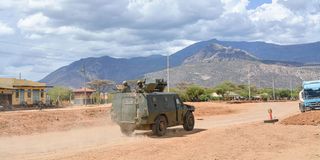
Our Projects are
Transforming African Trade
Quick Contacts
2nd Floor, Fidelity Insurance Centre Waiyaki Way, Westlands

Kenya and Uganda have initiated talks for the opening of a one-stop border post in Lokiriama in northwest Kenya, that will seek to open up trade and fight livestock raids.
Kenya’s Interior Principal Secretary Raymond Omollo said the border post would enhance movement and trade between the two nations and investments in the cross-border road network and improved security and surveillance.
The two countries revived their September 2019 memorandum of understanding that sought to enhance cross-border trade between the Turkana and Karamoja, by establishing immigration and customs border points at Lokiriama, Nawountos and Nakitong’o.
“The two governments should mobilise resources for peace dividend projects and to facilitate peace-building initiatives in the region for sustainable peace and security,” the joint statement concluded.
The border region is mainly occupied by the Turkana and Pokot ethnic communities in northwestern Kenya, and the Karamajong, an ethnic group of agro-pastoral herders living in the northeast of Uganda.
These communities have over the years engaged in banditry, making the region unsafe. The two countries, however, see the opening of the border post as one of the measures to end cattle rustling, or stock theft, an age-old tradition that has been commercialised by international criminal networks in East Africa and the Horn.
Besides Uganda, Kenya has also established several one-stop border posts with Tanzania and Ethiopia and officials argue banditry has reduced in some of these areas.
Kenya’s trade with Uganda stood at $353.63 million in the first half of 2022, down 9 percent, according to the Kenya National Bureau of Statistics.
But officials say banditry has also been fuelled by politicians becoming bold to challenge the government and pose insecurity in both Uganda and South Sudan.
Read original article
Disclaimer: The views and opinions expressed in this article are those of the authors and do not necessarily reflect the official policy or position of TradeMark Africa.